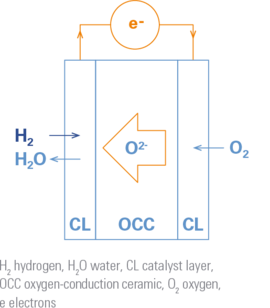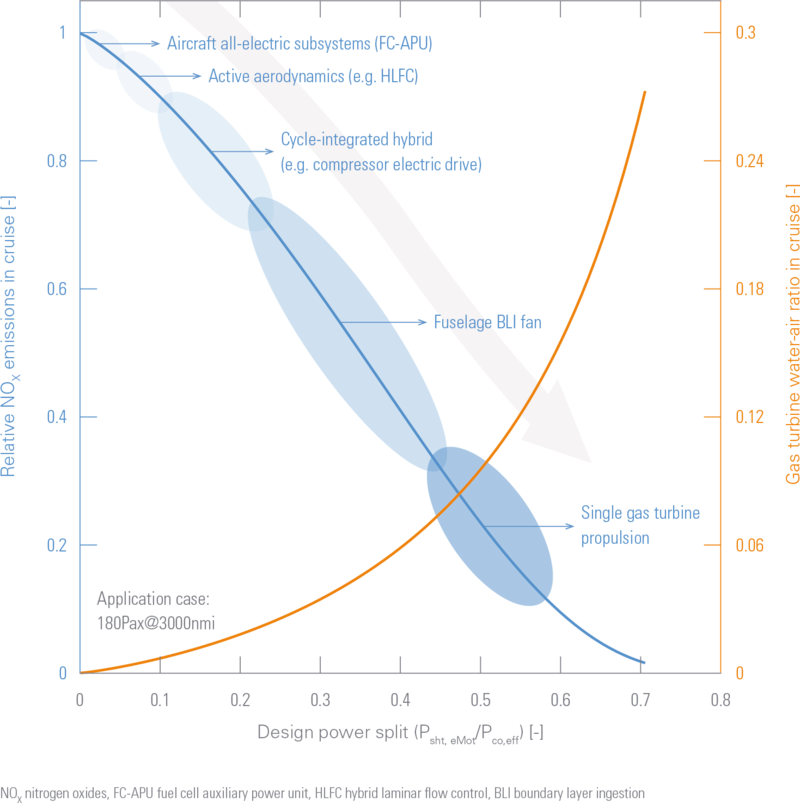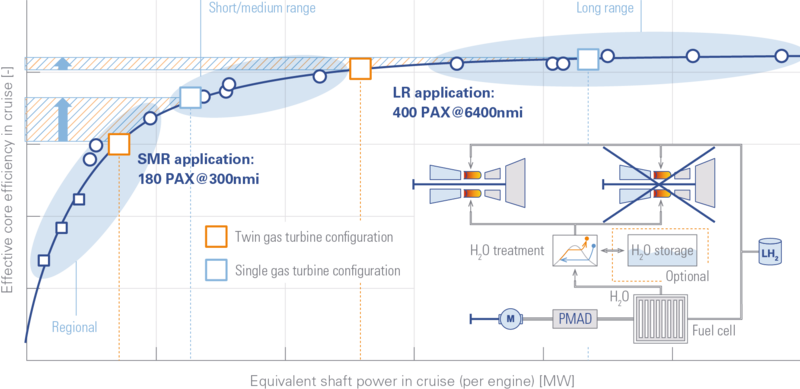Advanced hydrogen fuel cell (FC) technology is emerging as a possible competitor to gas turbine (GT) engines in the low power classes of aircraft propulsion. With GT technology remaining the backbone of advanced propulsion systems for large aircraft, FC technology could be the key to unlocking significant emissions reductions also for these large-volume market segments.

The solid oxide fuel cell (SOFC) – a promising technology candidate for a gas turbine hybrid.
Therefore, researchers at Bauhaus Luftfahrt are exploring promising combinations of FC and GT technology. Here, three levels of systemic inte- gration can be distinguished: a simple, discrete parallel system using only the electrical power output of the FC (Level 1); a water-integrated system in which the FC product water is also harvested in order to augment GT performance and drastically reduce NOx emissions (Level 2); and a fully GT-cycle-integrated arrangement aiming at full utilization of the FCs’ thermal energy output (Level 3).
In all cases, the FC electric power output can be utilized to serve various on-board customers. Depending on the FC size, scenarios ranging from merely supplying the vehicle’s all-electric subsystems to a radical single GT propulsion system seem conceivable.
Pre-conceptual analyses show that single GT propulsion might be attractive for short-to-medium range aircraft. Hybrid power systems with an FC powering an aft-fuselage boundary layer ingesting fan could be highly efficient in the long range. High temperature solid oxide fuel cell (SOFC) technology is particularly suitable for FC-GT hybrids. This has been identified for water-integrated systems (see initial assessment study discussed in the Bauhaus Luftfahrt Yearbook 2021), but is also the case for GT cycle-integrated FC systems. Combining SOFC technology with on-board fuel reforming may even unlock sustainable aviation fuels for FC-GT hybrid propulsion.
3 levels of fuel cell-gas turbine system integration
At all 3 levels, the FC electric power output can be utilized to serve various on-board customers. Depending on the FC size, scenarios ranging from merely supplying the vehicle’s all-electric subsystems to a radical single GT propulsion system seem conceivable.



